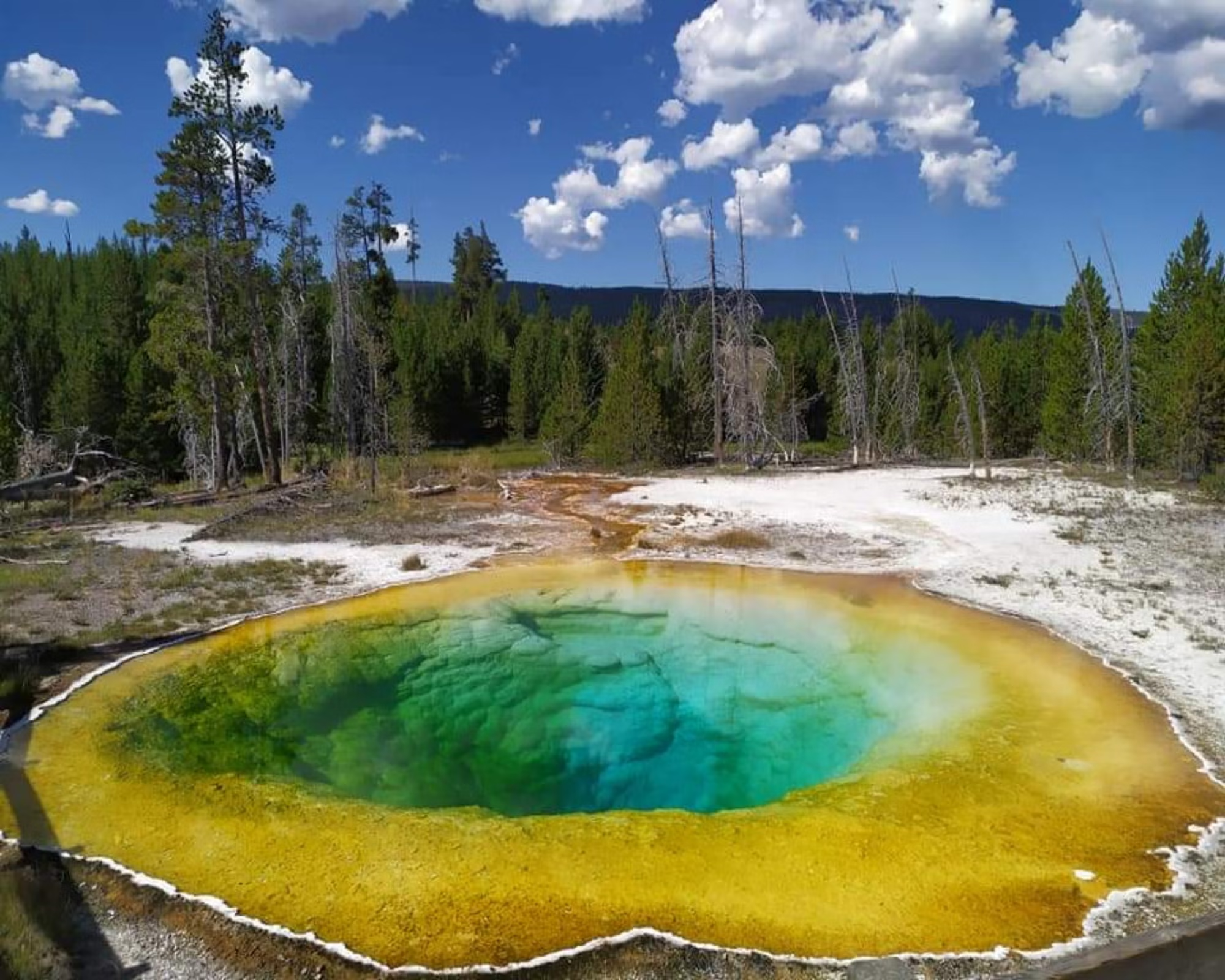Your support helps us to tell the story
Support NowMy recent work focusing on Latino voters in Arizona has shown me how crucial independent journalism is in giving voice to underrepresented communities.
Your support is what allows us to tell these stories, bringing attention to the issues that are often overlooked. Without your contributions, these voices might not be heard.
Every dollar you give helps us continue to shine a light on these critical issues in the run up to the election and beyond

Eric Garcia
Washington Bureau Chief
Yellowstone National Park’s famous geothermal pool named Morning Glory has reportedly changed color due to the volume of debris thrown in by visitors.
According to park historians and former employees, the once-jet blue water of the pool has been affected by coins, trash, and rocks that tourists have thrown in over the years.
“We found tons, probably thousands of coins,” former Yellowstone ranger Jeff Henry told Wyoming news outlet Cowboy State Daily. “The main park road used to go right by Morning Glory, so that would account for some of the metal parts that looked like car parts chucked into the bottom of the pool.”
According to the publication, the deep parts of the pool are now green and the edges of it have transitioned to yellow. As artifacts have continued to be thrown in the pool, this color change has also been due to the temperature of the water.
“Hotter pools tend to be a brilliant blue, and cooler pools can be more colorful since bacteria can grow there,” Mike Poland, scientist-in-charge of the Yellowstone Volcano Observatory, said. “At Morning Glory, the temperature cooled because people throwing objects in caused the conduit to become partially blocked, and the temperature went down, allowing different types of bacteria to grow.”
The tradition of throwing things into the pool dates back to 1872, when the park first opened, according to Yellowstone National Park historian Alica Murphy. She claimed that tourists have always been known for throwing objects into the pool, hoping for either good luck or to prompt a geothermic event.

“People didn’t understand the plumbing and how geysers worked,” she told Cowboy State Daily. “There were lots of ideas about, ‘If we throw something into this pool, we might be able to make it erupt.’
“I think there was some trial and error and a misunderstanding of the damage they were doing.”
Murphy added: “Wishing wells are a time-honored tradition. Flip a coin into a wishing well and make a wish. There is something about a pool of water that gives humans a weird instinct to throw things into it.”
However, Henry noted that he hasn’t seen “anywhere near as many coins in pools” in recent years as he did at the beginning of his decades-long career.
“The bottoms of the more accessible springs used to be paved with coins, but now it’s pretty rare to see anything thrown into the pools,” he said.
He shared that throughout many of the pools at Yellowstone Park, he’s seen fewer and fewer coins being thrown in there. “I think people are much more respectful than they were in my early days. It’s one way that values and behavior have changed over the years,” he added.
According to the National Park Service, the Morning Glory Pool was “named in the 1880s for its remarkable likeness to its namesake flower.” As it has become a victim of vandalism, much of the debris thrown into it “became embedded in the sides and vent of the spring, which reduced the water circulation and thus the water temperature.”
However, “natural changes may be cooling the water,” with cool temperatures allowing “orange-and yellow-colored bacteria to thrive.” The average temperature of the pool is 159.3 degrees Fahrenheit.
Disclaimer: The copyright of this article belongs to the original author. Reposting this article is solely for the purpose of information dissemination and does not constitute any investment advice. If there is any infringement, please contact us immediately. We will make corrections or deletions as necessary. Thank you.



